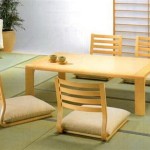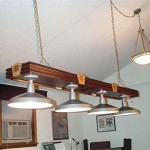Low Table Japanese Style: A Deep Dive into the Design and Function
Low tables, often referred to as "kotatsu" or "chabudai" in Japanese, are prominent features of traditional Japanese homes and culture. These tables play a multifaceted role, contributing to the aesthetic, functional, and social aspects of Japanese living. Their low height, characteristic design, and cultural significance set them apart from Western tables, making them intriguing subjects for design enthusiasts and cultural explorers alike.
This article delves into the world of low tables in Japanese style, examining their historical context, distinct features, and diverse uses within Japanese homes and culture. It explores the rich tapestry of design variations, materials, and functionality that makes low tables an essential element of Japanese interior design and daily life.
Navigating the Nuances: Types of Low Tables
Low tables in Japan are not a monolithic entity. They come in a variety of forms, each tailored for specific purposes and settings. Here are two prominent examples:
1. Kotatsu:
The kotatsu is a heated, low table specifically designed for warmth and comfort during the cold Japanese winters. It consists of a frame, often made of wood, with a tabletop and a heating element underneath. A thick, padded quilt called a "futon" is placed over the table, creating a cozy enclosure where people can sit or lie down. The kotatsu is typically positioned in a living room or dining area and serves as a gathering space for families and friends.2. Chabudai:
The chabudai, also known as a "chadai," is a low table primarily used for traditional tea ceremonies. These tables are often characterized by their simple, elegant design, featuring a circular or rectangular tabletop supported by four or six legs. Chabudai are traditionally made from high-quality wood, such as cherry, and are renowned for their craftsmanship and aesthetic appeal. They are essential for the precise and ritualistic movements involved in Japanese tea ceremonies.The Art of Low Table Design: Aesthetics and Functionality
The design of low tables in Japan goes beyond mere practicality, reflecting a deep appreciation for aesthetics and craftsmanship. Key design elements include:
1. Low Height:
The low height of Japanese low tables is a defining characteristic. It promotes a sense of intimacy and closeness, encouraging a relaxed and comfortable posture among those seated around the table. This design philosophy is rooted in traditional Japanese values of humility and respect for the ground.2. Material Selection:
Traditional Japanese low tables are crafted from natural materials like wood, bamboo, and tatami mats. These materials are valued for their durability, warmth, and intrinsic beauty, contributing to the overall ambiance of the space.3. Simplicity and Elegance:
Japanese low tables often showcase a minimalist design aesthetic, with clean lines, uncluttered surfaces, and subtle details. This approach emphasizes the natural beauty of the materials and the craftsmanship involved in their creation. Simplicity also reflects the Japanese belief in finding beauty in the everyday and appreciating unpretentious elegance.Low Tables in Japanese Culture: Beyond Furniture
Low tables transcend their function as mere furniture pieces. They are deeply embedded in Japanese culture, serving as focal points for social interaction, ritual practices, and artistic expression.
1. Social Gatherings:
Low tables, especially kotatsu, are central to social life in Japanese homes. They serve as gathering spaces for families and friends, fostering a sense of togetherness and shared experiences. The low height encourages a relaxed and intimate atmosphere, conducive to conversation and bonding.2. Ritual Practices:
Chabudai are indispensable for traditional tea ceremonies, a significant aspect of Japanese culture. The prescribed movements and gestures associated with the tea ceremony, performed around the chabudai, demonstrate respect for tradition and the pursuit of harmony and balance.3. Artistic Expression:
Low tables themselves can be works of art, especially those crafted by skilled artisans. Their intricate designs, meticulous craftsmanship, and use of high-quality materials attest to the Japanese appreciation for beauty and artistry in everyday objects.The integration of low tables into daily life and cultural practices underscores their importance in the fabric of Japanese society. They symbolize comfort, tradition, and the interconnectedness between people and their surroundings. Their presence in traditional homes transcends mere functionality, contributing to the unique ambiance and spirit of Japanese living.

Fmxymc Japanese Floor Table Rectangular Style Tatami Vintage Tea Low Including 4 Seats For Sitting On The Accent Furniture 14 Coffee Dining

Japanese Style Low Table Sets Perfect For Small Gatherings Viola Ping

Japanese Inspired Square Coffee Table Woodworking Furniture Project

Buy Solid Wood Japanese Style Low Dining Table With Breakfast Set In Latest Sets Collection Saraf Furniture

Aditya Art Natural Solid Wood Japanese Style Low Dining Coffee Table For Home Size W44 X D30 H18 At Rs 9000 In Jodhpur

Low Dining Table Japanese Coffee Chabudai Tatami With Floor Chair For Pillow Cushion Natural Bamboo Small Finland

A Japanese Style Coffee Table With Rusticated Top Avery Dash Collections

Pine Wood Low Table Tatami Tea Set Umi Sets

Japanese Style Coffee Table Small Large Solid Wood Apollobox

Elm Tatami Tea Table Solid Wood Low Floor Japanese Bay Window Small Coffee Balcony And Chair Lazada Ph
Related Posts








